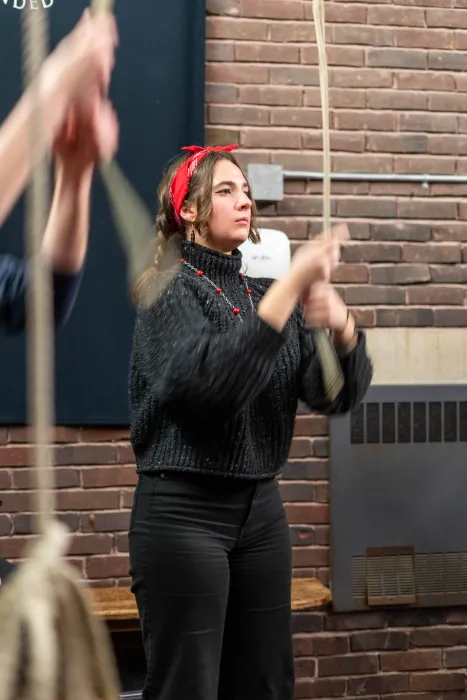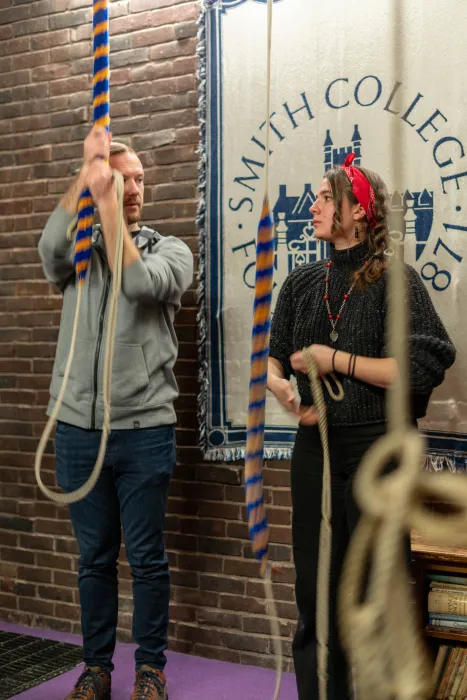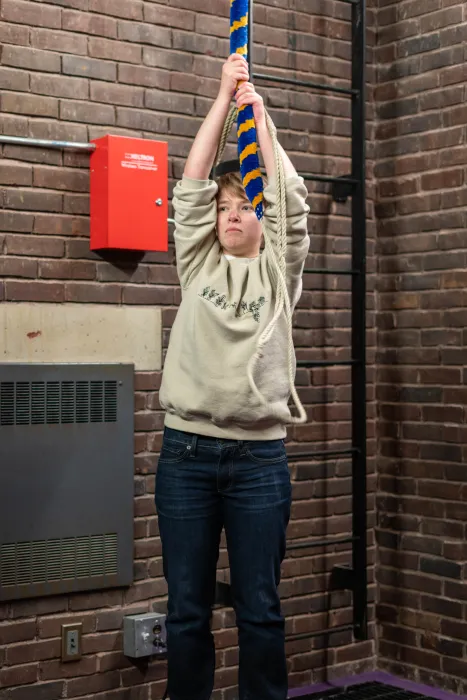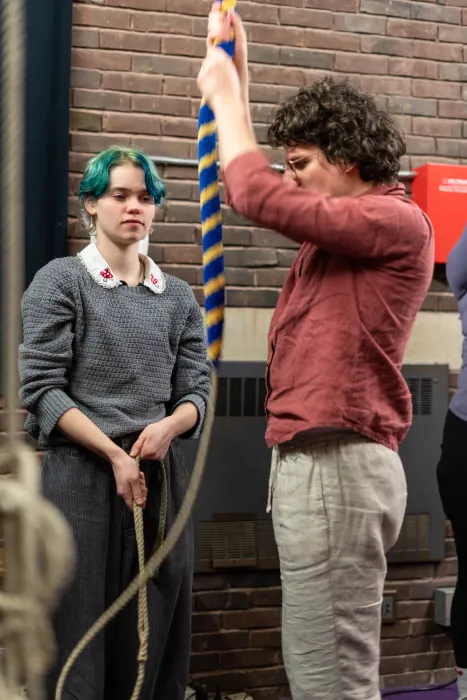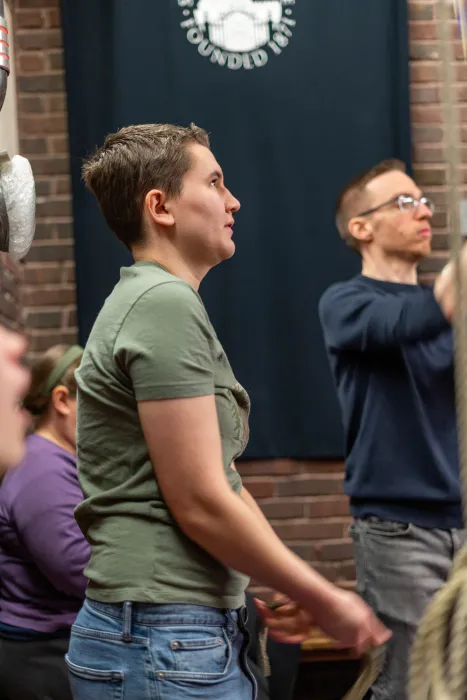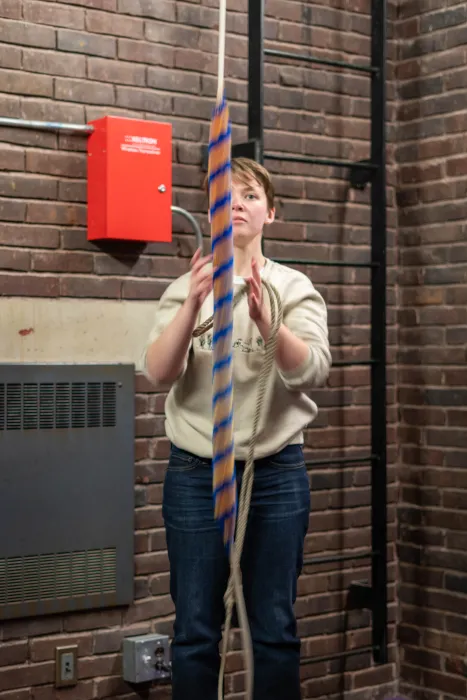Show and Bell
Students
A glimpse of the inner workings of Mendenhall Bell Tower
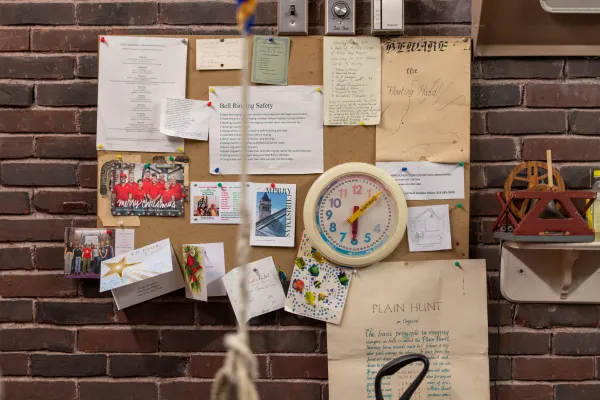
Photo by Sherry Li ’25
Published February 5, 2024
When I was a first-year, I used to think that the chiming bells I’d occasionally hear on campus were caused by the wind. It wasn’t until I spotted poster in the campus center inviting people to a change ringing training session that I realized what was actually happening: Bell ringers were practicing their craft in the Mendenhall Bell Tower.
Over interterm, I finally had a chance to explore the Mendenhall space and find out more. One big takeaway? Even though I’ve been studying music for many years, I still have no idea how the changing ringing notation works. Their music scores look like squiggly lines!
To help understand how their playing works, I turned to the group’s co-chair, Maisy Hoffman ’25, who told me all about bell ringing, the scores, and how the ringers coordinate efforts as they play.
Can you introduce the basics of what bell ringing is?
Change ringing is an old English tradition of ringing not songs, but patterns called methods. Methods are made up of permutations of arrangements of bells that never repeat. It‘s a collaborative activity in music, math, and exercise that anyone can enjoy regardless of experience in music, math, and exercise.
What is your favorite aspect of ringing tower bells?
I find that one of my favorite things about ringing is the everlasting pursuit of growth—there‘s always more to learn and better technique to perfect. There's a huge sense of accomplishment anytime you do something in ringing for the first time, and every ringer is always working toward another goal.
What kind of scores do you read and how do you read them?
That's a great question! We actually don‘t read the notation for what we ring while we‘re ringing. The notation we use looks essentially like a bunch of overlapping squiggly lines, and each line follows the path that one bell rings, but while ringing we have those lines memorized. A large part of ringing with others is just counting and being able to keep track of where you are in relation to other ringers.
How does collaboration work in ringing?
While ringing, one person is assigned (in advance) to tell everyone else what to do, when to start and end patterns, and when to stop ringing. There are a set of commands we all know, so we stay on the same page that way.
What is something that people who don‘t ring bells might not expect?
The bells take a long time to learn how to ring! Generally it takes about 10 hours of just rope handling time for learners to start to ring on their own, and ringing well is a process that takes much longer.
Who can join and how can they join?
Anyone can join and all it takes is just showing up to a practice!
When is your normal practice time?
We practice from 5:30 p.m. to 7:30 p.m. every Monday and Thursday, with more time dedicated to teaching newer ringers after 6:30 p.m., and more handbell-focused sessions on Saturdays from 1 p.m. to 3 p.m.
